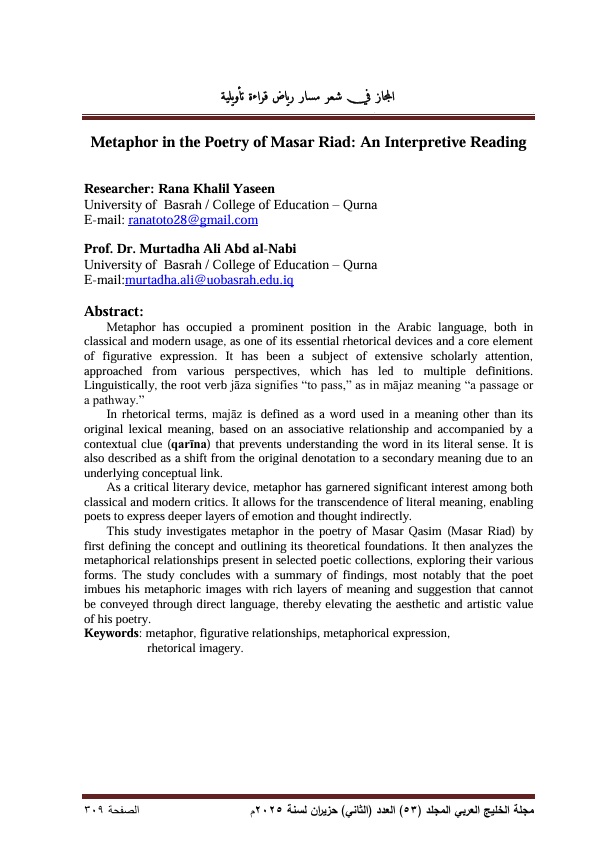Metaphor in the Poetry of Masar Riad: An Interpretive Reading
Keywords:
metaphor, figurative relationships, metaphorical expression, rhetorical imageryAbstract
Metaphor has occupied a prominent position in the Arabic language, both in classical and modern usage, as one of its essential rhetorical devices and a core element of figurative expression. It has been a subject of extensive scholarly attention, approached from various perspectives, which has led to multiple definitions. Linguistically, the root verb jāza signifies “to pass,” as in mājaz meaning “a passage or a pathway.”
In rhetorical terms, majāz is defined as a word used in a meaning other than its original lexical meaning, based on an associative relationship and accompanied by a contextual clue (qarīna) that prevents understanding the word in its literal sense. It is also described as a shift from the original denotation to a secondary meaning due to an underlying conceptual link.
As a critical literary device, metaphor has garnered significant interest among both classical and modern critics. It allows for the transcendence of literal meaning, enabling poets to express deeper layers of emotion and thought indirectly.
This study investigates metaphor in the poetry of Masar Qasim (Masar Riad) by first defining the concept and outlining its theoretical foundations. It then analyzes the metaphorical relationships present in selected poetic collections, exploring their various forms. The study concludes with a summary of findings, most notably that the poet imbues his metaphoric images with rich layers of meaning and suggestion that cannot be conveyed through direct language, thereby elevating the aesthetic and artistic value of his poetry.




